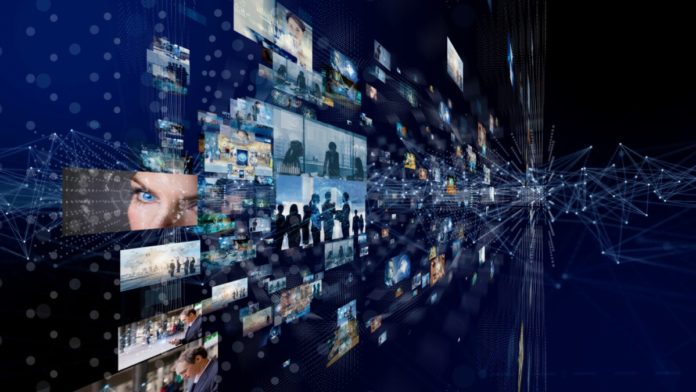
In this guest column, SilkRoad Technology’s Senior Vice President Asif Malik looks at best practices for optimizing current HR technologies while preparing to leverage them for your company’s future business needs.
Businesses face unparalleled change and challenge stemming from an uncertain global marketplace, a tight and changing labor market and technological disruptions via artificial intelligence and automation. Organizations that can improve how they develop and train all their employees—from new hires through experienced and tenured workers—for skills necessary now and in the future will create for themselves a unique competitive advantage. By helping employees develop in their roles, and ultimately their careers, organizations will not only keep their high-performing talent, but enable a level of engagement and productivity that may pave a smoother road for operating in a yet unknown business environment, regardless of industry.
As traditional job functions change, the HR department needs a plan to guide its workforce and redefine the roles and costs of labor. @SilkRoadTweets #HRTech #HR Share on XIn the face of this changing work environment, HR leaders must spearhead a new way of preparing their entire workforce. As traditional job functions change, the HR department needs a plan to guide its workforce and redefine the roles and costs of labor.
The good news is that software and technology often used in recruiting and onboarding can be customized to guide an employee’s experience with the company through additional phases, such as learning, training and performance. HR technology can be utilized to guide the continued engagement and development of all employees–not just new hires–while integrating processes for reskilling and upskilling as a company’s operating models evolve.
Here are a few considerations and best practices for optimizing current HR technologies for all employees while beginning to utilize them for the future of a company’s business.
Evaluate Current HR Processes and Technologies for Use with Employees Beyond New Hires
Technology can be utilized to design employee engagement programs to meet the needs of different groups of employees throughout their careers. Take onboarding technology for example: A recent survey by Harris Poll and commissioned by SilkRoad Technology found that 94 percent of HR decision-makers surveyed agreed onboarding is key to employee development beyond the new hire period, but only 11 percent of respondents said onboarding is a continuous process at their organizations. The disconnect here is that HR decision-makers understand the importance of continuous onboarding but are taking little action to put this in place within their organizations, an issue that will only continue to permeate as the pace of change increases.
The onboarding process can also be used when a company goes through a transition and employees are shifted to new departments or roles, or when an employee returns from a family or medical leave. Technology can help re-connect those in the organization with the strategy of the company and their own role. It can also help connect them with people who have gone through a similar transition. Having these systems in place before transitions happen will help employees ease into a new role, or return to a past role, in turn keeping the organization running smoothly. During these moments, it’s also important to gather feedback from employees to keep improving the process. Automating this feedback will alleviate the time and energy it takes to sort through individualized feedback and pull out key themes for an organization to consider. Working through this process of evaluation and assessment will help HR leaders, employees and the organization utilize traditional processes for future business and employee needs.
Automate Menial Tasks and Increase Time for Deeper, Thoughtful Work

Planning for today and tomorrow require two different sets of thinking, but advances in technology are helping to bridge that gap. AI and automation can help in setting up employee experience software for certain mechanisms of onboarding and training to be continuous and ongoing, delivering the right information to the right employee at the right time.
For example, digital forms and pre-populated data and electronic signatures drive efficiency and accuracy and cut back on stacks of paperwork and the time it takes to fill out. Periodic electronic prompts for “pulse checks” with employees and managers help workers improve and acquire new skills. Automated learning opportunities help employees remain challenged and engaged in their work. The correct solutions to these small tasks can create a big difference in an employee’s experience and opportunity to stay engaged. Offloading menial work to algorithms, bots and other AI tools can enable employees, managers and leadership to be more strategic and high touch where the situation demands it.
Transition Current HR processes and Technology for Reskilling and Upskilling
K·Coe Isom, a leading agriculture consulting and accounting firm, adjusted its performance and development model to create an employee-centric experience for training. The K·Coe Isom training model starts with the individual to understand how each person works best. The firm aims to understand which markets are best aligned with each employee’s passion and skills, the “DNA traits,” or business advisor behaviors each person exhibits naturally, and where each wants to improve. All these factors are taken into consideration to identify which of the firm’s four career paths an employee will focus on and what the talent development expectations for that individual will be.
AI plays a key role in this model through the dedicated people support that K·Coe Isom provides. K·Coe Isom uses training, talent advisors and internal communications to help employees grow and identify performance areas for the individual to improve, suggests learning opportunities that will further develop the person’s growth in the company and identifies the path for success for each individual and the best ways to communicate with them.
As K·Coe Isom experienced, the workforce is changing right before its eyes. So why not change the way we work to compliment this new style? HR technologies can be the catalyst to help employees acquire the skills necessary to succeed in the future workplace. Skills anticipated to be increasingly important for human relevance in a world with more robots and machines include critical thinking, active learning and an agile mindset. Implementing the right technology to automate learning and development courses can guide employees to take courses on new ways of thinking, create resource groups of employees from different departments and send reminders to meet offline with colleagues for brainstorming and ideation discussions that may consistently be pushed for other meetings and projects.
By optimizing HR technology and solutions, companies are making the employee experience more dynamic while addressing potential upskilling or reskilling needs of employees throughout the entirety of their careers, so they are prepared to succeed in an evolving workplace.
The needs of today’s employees are changing, and with AI and automation so are the needs of the workforce. Starting now to assess current processes and technologies supporting the employee experience at your company can enable better engagement and continuous development, setting the stage for using those systems to reskill and upskill. Optimizing and applying HR technology in this way can keep your workforce engaged and ready for the future.
Asif Malik is Senior Vice President and Chief Information Officer at SilkRoad Technology. He has more than two decades of expertise in consulting across a variety of disciplines, having orchestrated infrastructure overhauls and upgrades for business continuity, cloud migrations, application rationalization and data center operations implementation. This guest column adheres to our editorial guidelines but does not necessarily reflect the opinions of the editors.
Sign up for our newsletter here.
Image: iStock













